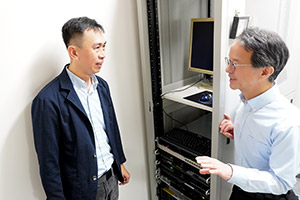

09/25/2023

Many scientific and engineering challenges—including structural analysis, image and signal processing, fluid dynamics, etc.—are addressed by solving linear equation systems Ax = b (where A is a coefficient matrix that is often large and sparse, b is a known vector, and x is the unknown vector). These equations often require high-performance computing (HPC) systems to obtain accurate solutions within a reasonable time frame.
However, the increased computing power of HPCs is a double-edged sword: while the sheer number of processors offers the potential for solving complex problems more efficiently, it also introduces time-lags related to communication and synchronization.
In a 2023 article, Huynh and Suito from AIMR addressed this issue by proposing a new method based on two recent approaches: the pipelined BiCGStab (p-BiCGStab) and the single-synchronized BiCGSafe (ssBiCGSafe)1. The proposed method inherits advantageous characteristics from each approach, namely, hiding communication latency and utilizing only one global reduction phase per iteration, respectively. By merging these strengths, the proposed method offers enhanced benefits for application in HPC systems.
“Through numerical experiments, we have shown that our proposed method significantly improves both convergence behavior and execution time when compared to either the p-BiCGStab or ssBiCGSafe approaches,” says Suito. “In the future, I anticipate these results will contribute to the development of a more universal algorithm capable of addressing a wide range of complex scientific problems such as numerical simulations of large-scale fluid flow using supercomputers.”
(Author: Patrick Han)
This research highlight has been approved by the authors of the original article and all information and data contained within has been provided by said authors.